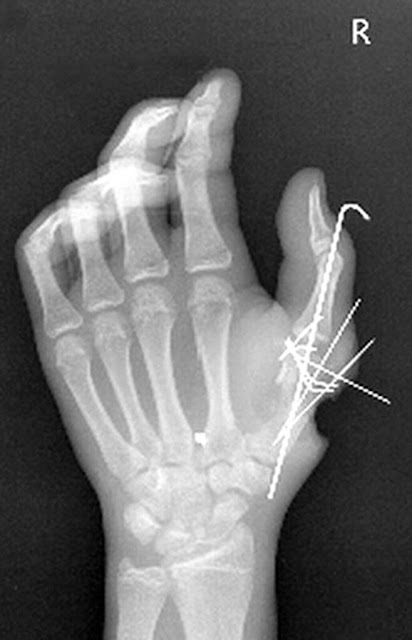The thumb is composed of two bones, namely the distal phalange and the proximal phalange. The distal phalange is the bone that covers the tip of the thumb up to the knuckle while the proximal phalange covers the knuckle up to the base of the thumb. Between these two bones, specifically those of the thumb and forefinger bones, is the area wherein the webbing of ligaments and tissues are found. In thumb fractures, any of these bones can be damaged but the most severe fractures involve damage to the joints. These injuries usually happen when the fracture occurred on the thumb base that is close to the wrist.
Types
• Rolando and Bennett fractures. These injuries do happen at the base of the thumb and in the joint that is between the wrist and the metacarpal bone.
• Joint fractures. These are considered more severe type of thumb fractures. Generally, these do need surgeries in order to bring back the thumb on its original condition. More complications will arise if these fractures are left untreated.
Thumb Fracture Diagnosis
For the diagnosis, the doctor may request the patient to state his medical history and will look for obvious signs of thumb fractures. People with histories of bone problems in their families are often given special attention because they are more prone to developing serious bone fractures. X-rays and CT scans may also be required so that the doctor can properly analyze the extent of the damage on the joints and to know if some nearby bones were also fragmented.
Causes
Most fractures of the thumb are brought about by direct stress like from falling and from sports accidents. An athlete, for example, can have his thumb fractured if he catches a ball the wrong way which causes the pulling of his thumb backwards. Other thumb fractures can also be caused by indirect causes such as muscle contractions that are normally experienced by people who participate in sports like hockey, wrestling, skiing, and football. Individuals who also have weak bones due to calcium deficiencies are also prone into having this injury and people who are already suffering from osteoporosis are always at greater risk.
Fractured Thumb Symptoms
• Swelling and severe pain on the injured area
• Inability to move or use the thumb
• Sensation of extreme tenderness on the fractured area
• Deformed appearance or sticking of the bone on the injured finger
• Sensations of coldness or numbness on the injured thumb
Fractured Thumb Treatment
Doctors only require the use of casts or slinging the hand for those who have mild thumb fractures. A fracture is considered ‘mild’ if the bones are not displaced or moved out of place too much. Orthopedic surgeons usually prescribe the use of spica casts to keep the fragmented bones on proper places. Casts are usually worn from three to six weeks depending on the extent of the damage. During the period that the patient must wear the cast and he will be required to have scheduled x-rays so that the doctor can check if the bones are healing on their proper alignment.
Another option is surgery but this is only done for severe injuries only specifically when the bones are fractured into small pieces. Other fractures which may also require surgery is when there is no more bone movement between the fractured thumb and the part where the thumb is connected. During the operation, the surgeon will realign the fractured bones and use devices to keep them secured. When talking about devices, the doctors will be using internal and external devices. Internal fixation surgery makes use of plates, pins, screws, and wires while external fixation tools involve the use of pins that are attached to the fractured bones and being supported by an external fixation device.
After the surgery, the patient must also wear splints or casts for a couple of weeks. Therapies will follow per recommendation of the physician.
Prevention of Thumb Fractures
The danger of having thumb fractures can be minimized by wearing hand padding, gloves, or protective tapping especially when doing activities that involve the extreme use of the hands. People who have nutrient deficiencies should also practice eating a balanced diet and having exercise routines to strengthen their bones.
When to Call a Doctor
The help of a doctor should be immediately sought after a hand accident that caused severe pain on the thumb area. If an accident like this is ignored, the hand may develop swelling, making the bones more difficult to realign. Having delayed treatments also lowers the chances of bringing the hand back to its normal condition.

Comments
Post a Comment
Please do not enter any spam link in the comment box.